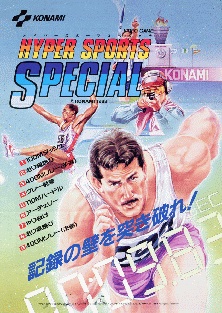This article needs additional citations for verification .(September 2025) |
| Konami '88 | |
|---|---|
 Japanese arcade flyer | |
| Developer(s) | Konami |
| Publisher(s) | Konami |
| Platform(s) | Arcade |
| Release | 1988 |
| Genre(s) | Sports |
| Mode(s) | Single-player, multiplayer |
Konami '88, released as '88 Games in North America and as Hyper Sports Special in Japan, is a 1988 Olympic-themed arcade sports video game developed and published by Konami. It is the third game in the Track & Field series by Konami, where players test their Olympic skills against other world-class athletes. As the title implies, it is loosely based on (but not licensed by) the 1988 Summer Olympics in Seoul, South Korea.
